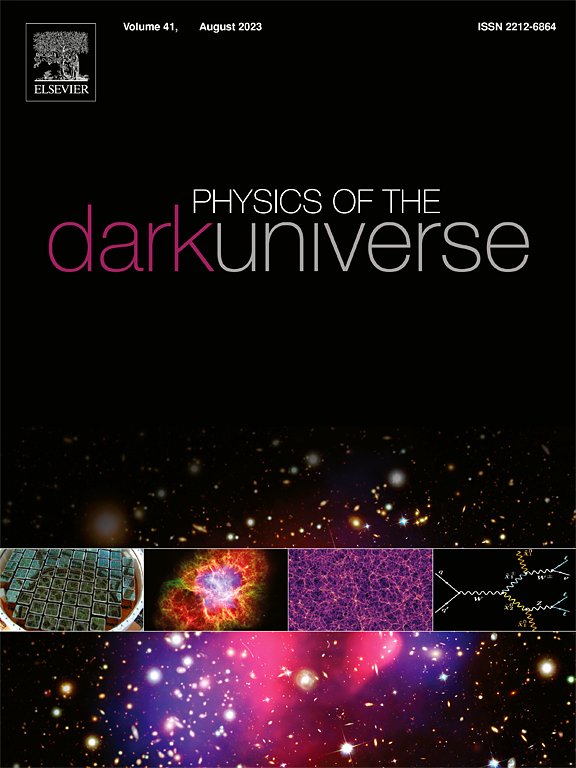Stability analysis of a f(Q) cosmological model along with EBEC dark matter equation of state
IF 5
2区 物理与天体物理
Q1 ASTRONOMY & ASTROPHYSICS
引用次数: 0
Abstract
This work aim to investigate the mysterious components of the universe, specifically dark energy and dark matter. To characterize the origin of dark energy, we investigate alternative gravity theory to general relativity exhibiting a flat background framework that is based entirely on non-metricity. Specifically, we consider the functional from as , where serves as a free parameter in the model, whereas to describe the dark matter, we assume the relation known as the Extended Bose–Einstein Condensate (EBEC) dark matter equation of state. We obtain the motion equations and the continuity relation incorporating both dark matter and dark energy fluid, along with an interaction term, particularly, , where represents the strength of the energy exchange from dark energy to dark matter. Further, we invoke a set of dimensionless phase space variables that enables us to transform the dynamics of the cosmological system into an autonomous system. Then we perform a detail stability analysis of the considered cosmological model, and we conclude that the cosmological model under consideration effectively captures the dynamics of the universe from a decelerated matter-dominated era to a stable phase of accelerated expansion.
求助全文
约1分钟内获得全文
求助全文
来源期刊

Physics of the Dark Universe
ASTRONOMY & ASTROPHYSICS-
CiteScore
9.60
自引率
7.30%
发文量
118
审稿时长
61 days
期刊介绍:
Physics of the Dark Universe is an innovative online-only journal that offers rapid publication of peer-reviewed, original research articles considered of high scientific impact.
The journal is focused on the understanding of Dark Matter, Dark Energy, Early Universe, gravitational waves and neutrinos, covering all theoretical, experimental and phenomenological aspects.
 求助内容:
求助内容: 应助结果提醒方式:
应助结果提醒方式:


